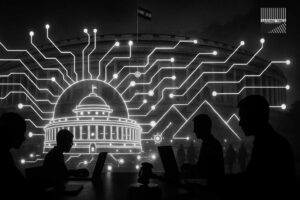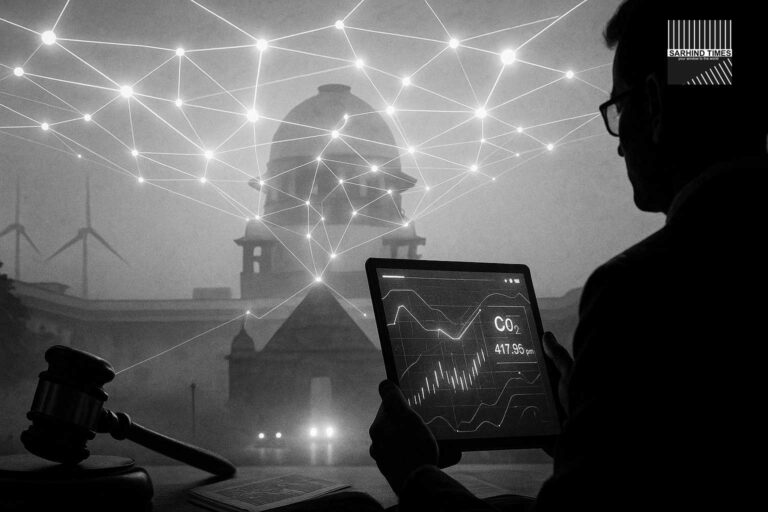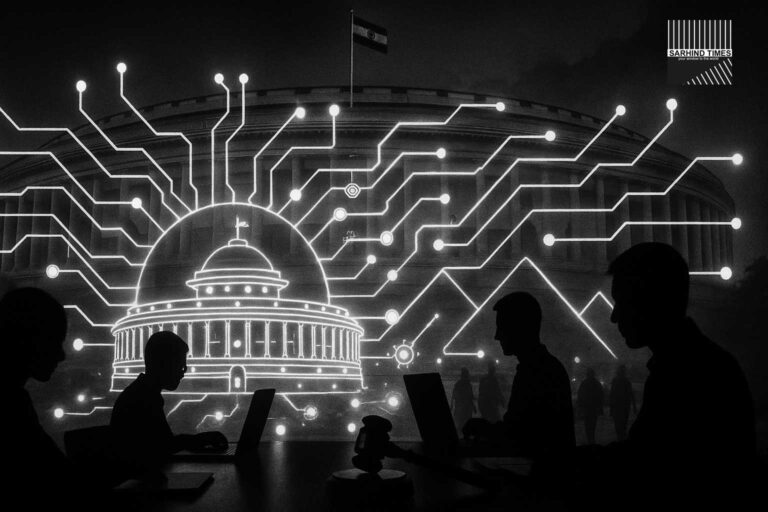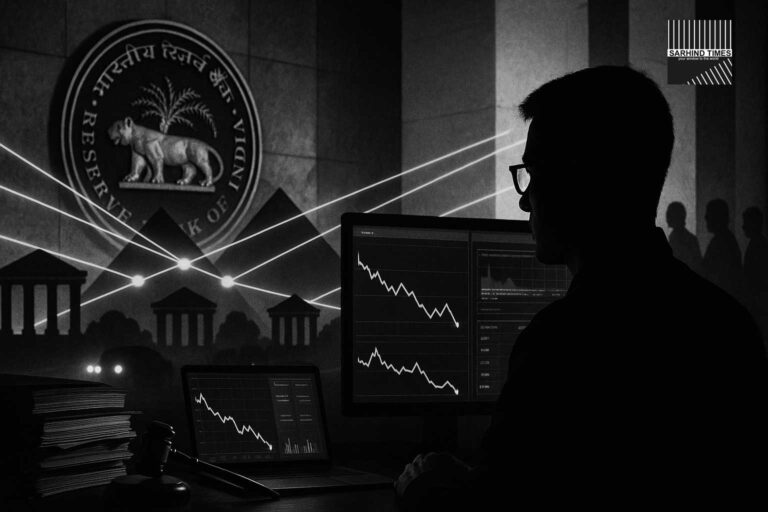In a bold step toward securing India’s fast-growing digital economy, the Reserve Bank of India (RBI) has launched a real-time AI-powered fraud detection system designed to monitor banking transactions across institutions and flag suspicious patterns instantly. The initiative — described as the “Neural Shield Network” — aims to prevent scams, phishing attacks, and unauthorised transactions before they reach customers’ accounts.
Mumbai, October 23 —
In what experts are calling the most significant overhaul of India’s financial security architecture since the advent of UPI, the Reserve Bank of India (RBI) on Tuesday rolled out the “Neural Shield Network” (NSN) — a national-level AI-driven fraud analytics system that connects all banks, payment gateways, and credit bureaus into one real-time intelligence grid.
The system, developed in partnership with the Institute for Development and Research in Banking Technology (IDRBT) and leading AI research labs in Bengaluru and Pune, will monitor millions of daily transactions using machine learning to detect and block suspicious activities within milliseconds.
“Fraud doesn’t wait for business hours. Now, neither will protection,” said RBI Governor Shaktikanta Das at the official unveiling.
“This system marks a paradigm shift from reactive fraud response to predictive fraud prevention.”
1. The Rise of Digital Fraud
India’s digital payment ecosystem — now processing over 1,200 crore UPI transactions monthly — has become a magnet for sophisticated cybercriminals.
According to RBI’s 2024 financial stability report:
- Banking and digital payment frauds rose 38% year-on-year.
- Losses from phishing and QR scams exceeded ₹1,800 crore.
- Nearly one in every 8,000 transactions showed anomaly signatures.
While banks have their own fraud monitoring systems, fragmented databases and delayed information sharing often allow repeat offenders to operate across institutions.
“The criminal doesn’t respect institutional boundaries,” said Deputy Governor T. Rabi Sankar.
“Our response must be equally interconnected.”
2. How the Neural Shield Network Works
The NSN system aggregates live transaction data from:
- All scheduled banks,
- UPI and credit card networks,
- NBFCs and microfinance institutions,
- Fintech intermediaries, and
- Payment processors like NPCI.
It uses neural learning algorithms trained on historical fraud data — including IP patterns, device IDs, behavioural anomalies, and transaction frequency — to assign a “risk probability score” to every digital action.
If the risk exceeds a certain threshold, the system auto-freezes the transaction for verification within 300 milliseconds.
“It’s like a vaccine for digital finance — trained on every past virus,” explained Dr. Anjana Menon, Head of IDRBT’s AI Centre.
“The model learns, adapts, and evolves faster than fraudsters can pivot.”
3. AI + Human Oversight
While AI performs the initial detection, RBI’s Central Fraud Monitoring Cell (CFMC) in Mumbai will retain human oversight.
Alerts are categorised into:
- Instant Freeze — Suspicious and high-value transactions halted automatically.
- Review Alert — Unusual behaviour flagged for manual audit.
- Network Threat — Coordinated attacks identified across multiple banks.
Each alert is assigned to specific bank teams through an encrypted fraud orchestration dashboard, ensuring accountability and traceability.
“AI sees the pattern; humans see the purpose,” said Meera Sinha, Chief General Manager (RBI).
“We’ve built a system where neither works without the other.”
4. The Legal Framework
The rollout comes under Section 10(2) of the Payment and Settlement Systems Act (PSSA), 2007, giving the RBI authority to regulate systemic security in digital payments.
A parallel data protection compliance layer ensures adherence to the Digital Personal Data Protection Act (DPDP), 2023.
Banks must obtain explicit consent from customers to share anonymised metadata with the NSN.
“Transparency is non-negotiable,” said RBI Executive Director Rachna Dixit.
“Every digital shield must be as ethical as it is efficient.”
5. Why It Matters Now
The system launches at a time when India’s banking sector faces:
- Spike in AI-assisted scams (voice cloning, deepfake video fraud).
- Rise of mule accounts used for laundering.
- Rapid fintech expansion outpacing risk management frameworks.
The RBI hopes the unified AI layer will “connect the dots” between seemingly unrelated incidents across institutions.
“When 10 small frauds happen in 10 banks, they’re not small anymore,” said Governor Das.
“They’re a coordinated pattern — and AI can see that.”
6. Industry Reaction
Banking leaders hailed the move as “long overdue” and “technologically decisive.”
SBI Chairperson Dinesh Khara called it a “national safety net for digital trust.”
“No single bank could have done this alone,” he said.
“But together, we can make cybercrime a losing game.”
Fintech startups, however, voiced concerns about compliance costs and data integration challenges.
The RBI has granted a six-month transition window for full adoption.
7. A Decade of Evolution
The idea of a unified fraud detection network dates back to 2017 when the Banking Codes and Standards Board of India (BCSBI) first proposed a shared “fraud data lake.”
Pilot studies between 2021–2023 proved that AI-based clustering reduced detection time from 72 hours to under one second.
Now, with NSN, the entire financial ecosystem is plugged into a real-time neural architecture, capable of processing five million events per second.
8. Global Comparisons
The NSN mirrors systems used by:
- The UK’s Financial Conduct Authority (FCA) for payment fraud.
- The U.S. Federal Reserve’s FedDetect model.
- The European Banking Authority’s (EBA) “Euro-AI Integrity Framework.”
However, RBI’s model goes further — integrating India Stack elements like Aadhaar, UPI, and PAN validation for deeper accuracy.
“India has built the world’s largest consent-driven financial data ecosystem,” noted MIT researcher Neha Narayanan.
“NSN is the logical next layer — real-time intelligence for real-time money.”
9. Customer Protection and Redressal
The RBI has introduced a one-click reporting feature in the DigiSevak mobile app, where customers can instantly report suspicious activities.
Once flagged, the AI cross-verifies across banks and initiates preventive measures.
Additionally:
- Refunds for confirmed fraud will now be processed within 72 hours,
- Banks are mandated to maintain “liability zero” for victims of unauthorised digital frauds (subject to prompt reporting).
“We want to make trust measurable,” said Deputy Governor Sankar.
10. Data Privacy and Ethics
RBI officials clarified that the NSN analyses metadata, not message content.
Personal identifiers are tokenised using privacy-preserving computation methods.
The system’s core algorithms have undergone a bias audit to ensure they do not discriminate by region, transaction amount, or institution.
“AI cannot become financial surveillance,” said Governor Das.
“It must remain financial protection.”
11. AI’s Role in Banking Governance
The NSN marks RBI’s first step into AI-led regulatory governance.
Beyond fraud detection, it will soon integrate modules for:
- AML (Anti-Money Laundering) analysis,
- Credit risk prediction, and
- Behavioural scoring for regulatory supervision.
By 2026, the RBI plans to transition to “Cognitive Supervision 2.0” — a digital twin of India’s financial network, where AI continuously audits, predicts, and reports systemic risks.
“We are moving from paperwork to predictive governance,” said Dr. Urjit Patel, former Governor, in a LinkedIn post.
“The RBI has evolved from referee to risk radar.”
12. Tech Behind the System
Built on a federated learning framework, the NSN allows banks to share insights without sharing raw data.
This ensures privacy while enabling collective intelligence.
It’s powered by:
- Tensor-based neural nets for anomaly detection,
- Natural language models to parse suspicious communication patterns, and
- Blockchain verification for data immutability.
All data centers are hosted on RBI’s sovereign cloud infrastructure.
13. Impact on Small Banks and NBFCs
The RBI will subsidise smaller institutions under a “Cyber Safety Support Scheme” for integration costs.
Cooperative banks, which saw a surge in phishing-related fraud, will receive technical support from IDRBT’s Cyber Cell.
“Financial safety must be inclusive,” said Finance Minister Nirmala Sitharaman.
“No customer should suffer because their bank is small.”
14. Industry Concerns
While widely welcomed, some cybersecurity experts caution that the AI system itself could become a high-value target for hackers.
“The smarter the shield, the smarter the sword,” warned ethical hacker Rahul Tyagi of Lucideus Tech.
“Continuous security audits will be critical.”
RBI confirmed it has implemented multi-layer encryption and zero-trust architecture with quantum-safe algorithms to preempt such threats.
15. A Global Model in the Making
The World Bank and IMF have expressed interest in studying India’s NSN as a “replicable architecture for emerging economies.”
If successful, it could position India as a global leader in AI-led financial security governance.
“The system doesn’t just protect India’s money — it protects its reputation,” said RBI Governor Das.
“Digital trust is India’s new currency.”
16. Human Stories: Victims of the Old System
For people like Pramod Naik, a retired teacher from Pune who lost ₹1.6 lakh to a fake KYC link, the new system offers long-awaited hope.
“They said the refund would take weeks. Now, if this AI works, maybe no one else will go through that,” Naik told Sarhind Times.
Across the country, over 3.5 lakh citizens filed digital fraud complaints in 2024 alone.
Many cases dragged on due to jurisdictional disputes and delayed interbank coordination — problems NSN aims to eliminate.
17. Global Experts Weigh In
Dr. Fei-Fei Li, AI pioneer at Stanford, praised the initiative:
“It’s encouraging to see developing nations take ethical AI leadership. India’s model of consent and collective defence is globally relevant.”
Cyber policy researcher Bruce Schneier added:
“The RBI’s neural model balances power and privacy — something Western regulators still struggle to do.”
18. The Road Ahead
The RBI will roll out Phase-II of NSN in 2026, expanding coverage to:
- Insurance fraud,
- Digital loan apps, and
- Cryptocurrency exchanges operating under new regulations.
Each phase will integrate with the Financial Intelligence Unit (FIU) for seamless cross-sector data flow.
19. Parliamentary and Public Oversight
The system’s deployment will be reviewed bi-annually by the Parliamentary Standing Committee on Finance.
Public dashboards will display anonymised fraud statistics, promoting transparency and citizen trust.
“AI must be watched even as it watches,” remarked MP Shashi Tharoor in Parliament.
20. Conclusion: The Future of Trust
The Neural Shield Network represents more than a technological milestone — it’s a moral commitment to restore public confidence in digital finance.
India, once dubbed the “land of cash,” now leads the world in digital payments.
And as its economy races online, the RBI has made one thing clear:
in the war against fraud, the country will fight fire with intelligence — artificial, but accountable.
“We cannot eliminate fraud,” said Governor Das in closing.
“But we can eliminate helplessness.”
#RBI #AIFraudDetection #DigitalSecurity #BankingInnovation #CyberSafety #Fintech #DigitalIndia #SarhindTimes




















+ There are no comments
Add yours